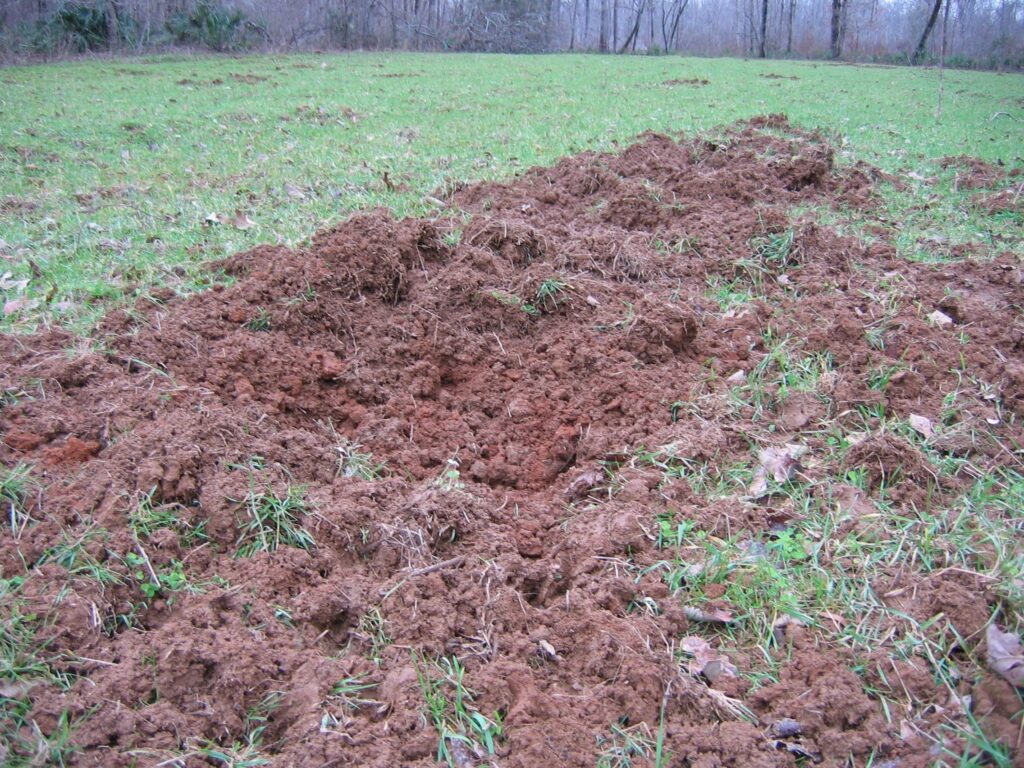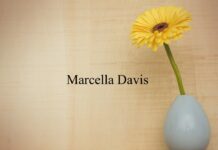
MONTGOMERY, Ala. – As the Forever Wild Land Trust (FWLT) is preparing for its first meeting of the year on Feb. 1, 2024, in Montgomery, the FWLT Board of Trustees will be focused on an initiative adopted at its last meeting of 2023 to spend up to $1 million to enhance existing efforts to mitigate the impact of feral hog populations.
Many landowners in Alabama and other states in the Southeast will testify about their struggle with ongoing issues related to feral swine populations. These nuisance feral swine populations can be found in all 67 counties in Alabama.
The Alabama Department of Conservation and Natural Resources’ (ADCNR) State Lands Division, which administers the Forever Wild program, and ADCNR’s Wildlife and Freshwater Fisheries (WFF) Division are in a constant battle to control the feral hog populations on the properties they manage. With no methods currently available to completely eradicate the feral swine populations, ADCNR staff spend a great deal of time and money working to reduce feral hog populations on ADCNR and Forever Wild properties. Several of these properties have adjacent acreages.
State Lands Director Patti McCurdy said the Board passed a motion at the November meeting to authorize the use of up to $1 million of stewardship funds for feral hog control measures.
“The motion passed with the instructions for us to explore any additional practices available to efficiently and effectively mitigate known populations as well as continue efforts to monitor for the emergence of additional nuisance populations and, finally, spend those funds wisely,” McCurdy said. “While management efforts on Forever Wild acreage, as well as the Department’s acreage overall, have been extensive and ongoing, we remain as frustrated as private landowners with just how pervasive and destructive the feral swine populations continue to be.”
During fiscal years 2019 through 2023, those efforts successfully removed more than 5,800 feral swine from ADCNR and Forever Wild properties. During the same period, hunters reported harvesting more than 465 feral swine.
“Just like every private landowner in Alabama has been experiencing, this is an ongoing struggle, and we’re no different,” McCurdy said. “The Board wanted to provide an additional spotlight on this challenging issue and concentrate our efforts on a specific initiative for this year. Forever Wild Board Members are very dedicated to identifying needs and pursuing tract enhancements. Last year, the Board adopted an initiative designed to enhance public access to all Forever Wild properties.”
According to the U.S. Department of Agriculture (USDA), feral hogs cause more than $1.5 billion in damages to property, agricultural interests (crops and livestock), native wildlife and ecosystems each year as well as cultural and historic resources. Estimates show that feral hogs cause $50 million of damage in Alabama annually.
“The damage comes in many forms,” McCurdy said. “On our acreage, many times it is basic ground disturbance causing issues with the wildlife habitat and recreation. The ground disturbance can cause issues with trail maintenance and other areas of recreational use, such as wildlife openings. That impact to the ground as well as habitat is difficult to reverse because it is ongoing. Like cogongrass, you’re looking at perpetual mitigation. Just like private landowners, we have to be prepared that we have a long-term fight on our hands.”
Board member Jimmy Parnell, President and CEO of the Alabama Farmers Federation (ALFA), introduced the feral hog motion after hearing from his constituents.
“I heard from our producers and farmers all across the state that they perceived that Forever Wild land was something of an incubator for wild hogs,” Parnell said. “They said they trap their land and the neighbors’ land, but the hogs keep coming out of Forever Wild land. I’d heard that for a good while and decided we needed to do something. I made the motion to spend up to $1 million and asked Forever Wild to put together a plan. It will be incrementally spent to figure out ways to deal with this. I don’t know that you will ever eliminate hogs on Forever Wild land, but you can sure reduce the population.
“I personally prefer to use professional trappers or eradicators. I think that’s the sure-fire way to get rid of hogs. We run into this with farmers. It’s fun for a little while, but a lot of them get tired of it after a few weeks. You need somebody who’s on it every day, not just for the sport of hunting the hogs.”
Parnell does expect the Forever Wild budget in the future will contain a feral hog mitigation component.
“I think this is a good start, and my guess is there will be some appropriation for this each year,” he said. “The funds are there. We have funds for maintenance. In my mind, this is to maintain that land.”

“Management of ADCNR and Forever Wild lands is a priority for us,” said Chris Blankenship, Commissioner of ADCNR and Chairman of the Forever Wild Land Trust. “That management includes prescribed fire, habitat enhancement, timber management, removing or mitigating invasive plants like cogongrass and removal of predators and invasives, including feral hogs. I appreciate the Forever Wild Board recognizing this and authorizing a ramp-up in feral hog removals. It is not a one-and-done type of activity. It will take continued effort to make a dent in the hog population.
“One additional enhancement we discussed with the Board was working toward adding the use of contractor services as a management tool, not only to provide additional manpower but also to add a fresh eye and fresh perspective to the management strategy, starting from monitoring for signs of an emerging nuisance population to development of a holistic management plan and then effectively executing it. So, we will be increasing staff efforts in coordination with initiating targeted use of contractor services. I appreciate the work our staff has done, and will continue to do, but I also am thankful for additional resources to fight this on our properties.”
Another invasive species that landowners and those who manage public lands must deal with is cogongrass, which McCurdy likens to feral hog infestations. According to the U.S. Department of Agriculture, cogongrass has now infested more than 75% of Alabama’s counties. This federally regulated noxious weed was introduced in the U.S. in 1911 as packing material in the port of Mobile. Estimates show that cogongrass costs more than $7.5 million in lost timber production in Alabama alone. ADCNR staff will continue cogongrass treatment efforts as well.
WFF Wildlife Biologist Andrew Green said that feral hogs are prolific breeders and reach reproductive capacity at six months. Each sow can produce a litter of piglets twice a year.
“It’s crazy the number of pigs they can have in a short amount of time,” Green said. “We have them in every county, but the areas with the most damage are the Black Belt soil region, the Wiregrass and Coastal Plain. They are more prevalent in agriculture areas that are planting peanuts, cotton or corn.”
Green said trapping is currently the most effective method of controlling wild hog populations. An effort to use sodium nitrite bait to reduce feral hog populations is still under development, according to Green.
“Trapping the whole sounder (family group) is about the only effective method,” he said. “And it’s not for the faint of heart. You have to put the work in. You can’t just throw up a trap.
“The number one thing is to pre-bait. The number two thing is pre-bait. You’ve got to make sure you’ve got them coming in and acclimated to the trap, whatever type you have. You don’t have to have the Cadillac or necessarily the poor man edition. A trap is a trap if it works well. The thing is you want to get every animal in that sounder. Make sure every hog that is coming in to the pre-bait is in the trap before you set the trigger.”
WFF offers technical assistance and guidance for landowners with feral hog programs. Under the National Resources Conservation Service’s Environmental Quality Incentive Program, landowners can receive cost-share assistance for equipment to deal with the feral swine. Visit www.nrcs.usda.gov/feral-swine-eradication-and-control-pilot-program for more information.
Alabama residents can purchase a $15 license ($51 for non-residents) to hunt feral hogs and coyotes at night. The season to hunt those animals at night begins at midnight on the day after the last day of gun deer season in that zone. The season ends 30 minutes prior to sunrise on the opening day of archery deer season in that zone. There is no bag limit, but you must have a valid annual resident or nonresident nighttime feral swine and coyote hunting license.
“Trapping is the number one route to control hogs,” Green said. “You can also shoot them at night outside of deer season when it’s legal to do that. In some cases, you can put enough pressure on the sounder that they may move off your property.”
Copyright Humble Roots LLC, 2024. All Rights Reserved.























